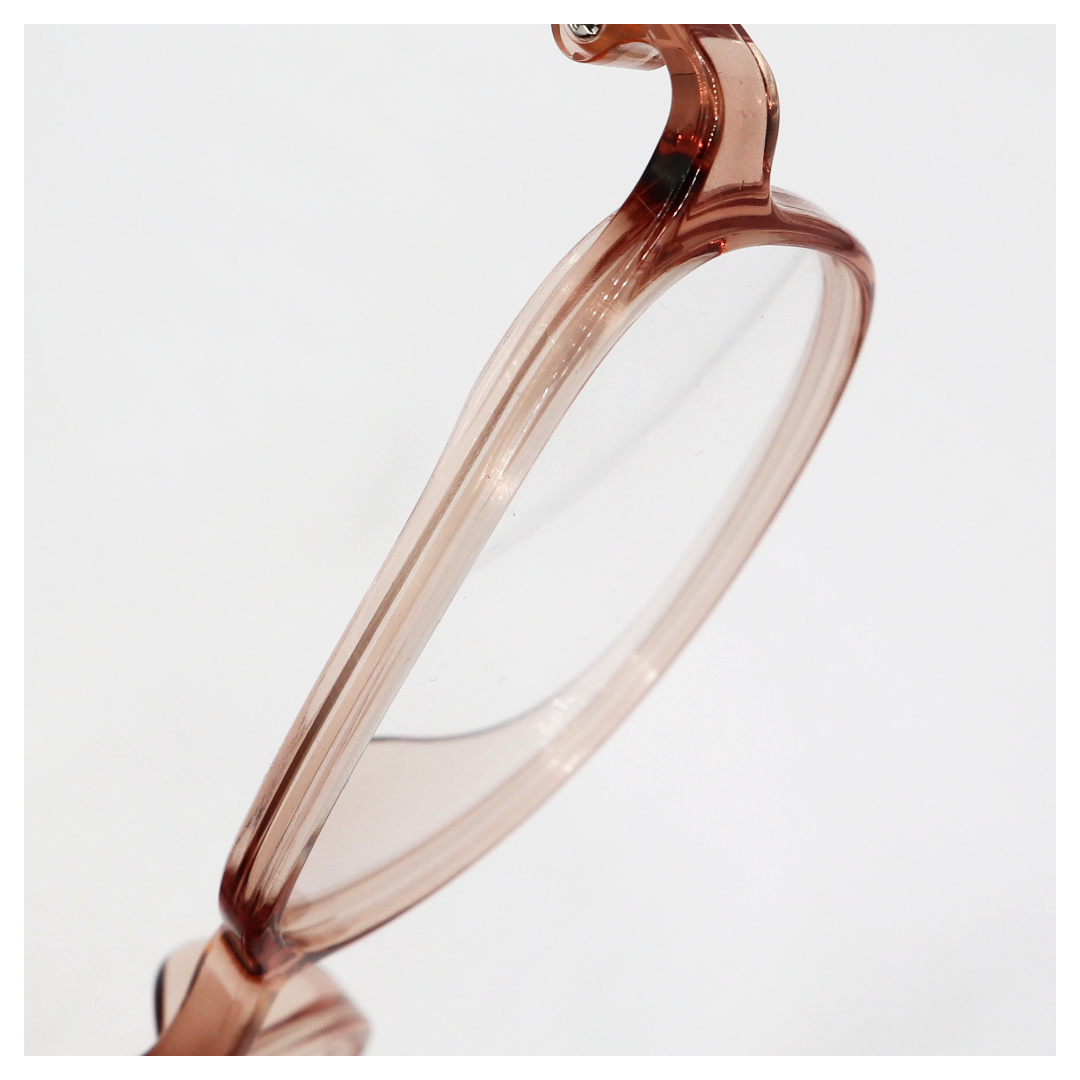Blog | High myopia prescription glasses. How to stop it from sliding down your nose?
It is common to hear of eyeglasses slipping down noses. With high prescription glasses, this is worse as they are generally thicker and hence heavier. However, there are some ways to reduce eyeglasses slipping even with high prescription lenses. We will discuss how we can reduce high prescription glasses slipping by considering the mechanics of the spectacles, starting from the high prescription lenses.
Lens
In the past, lenses were made of glasses and these are heavy. With advances in plastic technology, it is more common to find plastic as the material for lenses instead of glasses. Using plastic will certainly reduce the weight of high prescription lenses.
In the selection of lenses, it is common to hear about the index. Higher index typically means that the lens can be thinner to achieve the same amount of light bending. However, a higher index doesn't necessarily mean lighter lenses. Glass can achieve the highest index as lens material so if aesthetic is the priority, then high index glass will give the thinnest lens. However, for the same volume, glass can be three times heavier than plastic so a plastic lens is lighter despite being thicker. Even with plastics, there are different specific densities which in layman terms means the weight for a given size. A higher index plastic may have a higher specific density hence any reduction in lens thickness may not translate to equivalent weight savings.
Another way to reduce the thickness of the lens is to use aspheric lenses. Normal lenses in the market are spherical. Instead of a uniform curvature at the font, the front curve of the aspherical lenses gradually changes from the center to its edge. The resultant lens is much thinner than a normal spherical lens made of the same material and hence there will be a reduction in lens weight.
Frames
Eyeglasses frames come in numerous shapes and sizes. For myopic high prescription lenses, the lens is thinnest at the center and gets progressively thicker towards the perimeter. Choosing big round frames will mean bigger and heavier lenses. Choosing an oval or rectangle rim frame will reduce the amount of material and hence weight from the high prescription lens. Another consideration is the design of the rim. Thicker rims will add weight to the front especially if you choose metal or heavier plastic material such as acetate. Rimless, half-rim or thin plastic rim frames will reduce the weight. Plastics such as TR-90, Ultem and polyamides which are now commonly used in making frames are much lighter than acetate and will not add much weight to the front for full rim frames.
 Beta-Simplicity eyewear made of lightweight plastic. |
In terms of aesthetics, some frames are designed with flanges at the side and top of the rim so that the thickness of the lenses are partially covered. This will create the illusion that the lens is thinner than it actually is. With lighter plastic material, the increased material on the frame will not lead to a significant increase in the weight of the rim.
 Top flange of ConcavTM eyewear. |
Support
The type of support from the frame is perhaps one of the most important elements but often neglected. The two parts of the frames that provide the best support are the nosepads and temple tip. Ideally, these two parts work as counteracting forces to keep the frame in place. However, in most frames, the temple tip does not provide adequate support hence the nosepad should be adjustable so that it can provide some support by pinching on the nose. For the best support, the temple tips work as counteracting forces to the nosepad and in this case, the nosepad does not need to be adjustable. ConcavTM frames come with an innovative, patent pending Z-temple tip design that is unique and anchors well to the back of users' ears without causing discomfort. The temple of ConcavTM frames has an outer rib to contribute to the supporting forces from the side of users' head. This meant that Concav rim can have more stylish designs without the glasses sliding down your nose.
 Z-support tip of ConcavTM eyewear. |
15 June 2023
Updated. -
Read also
14 July 2018
26 July 2018
27 January 2018